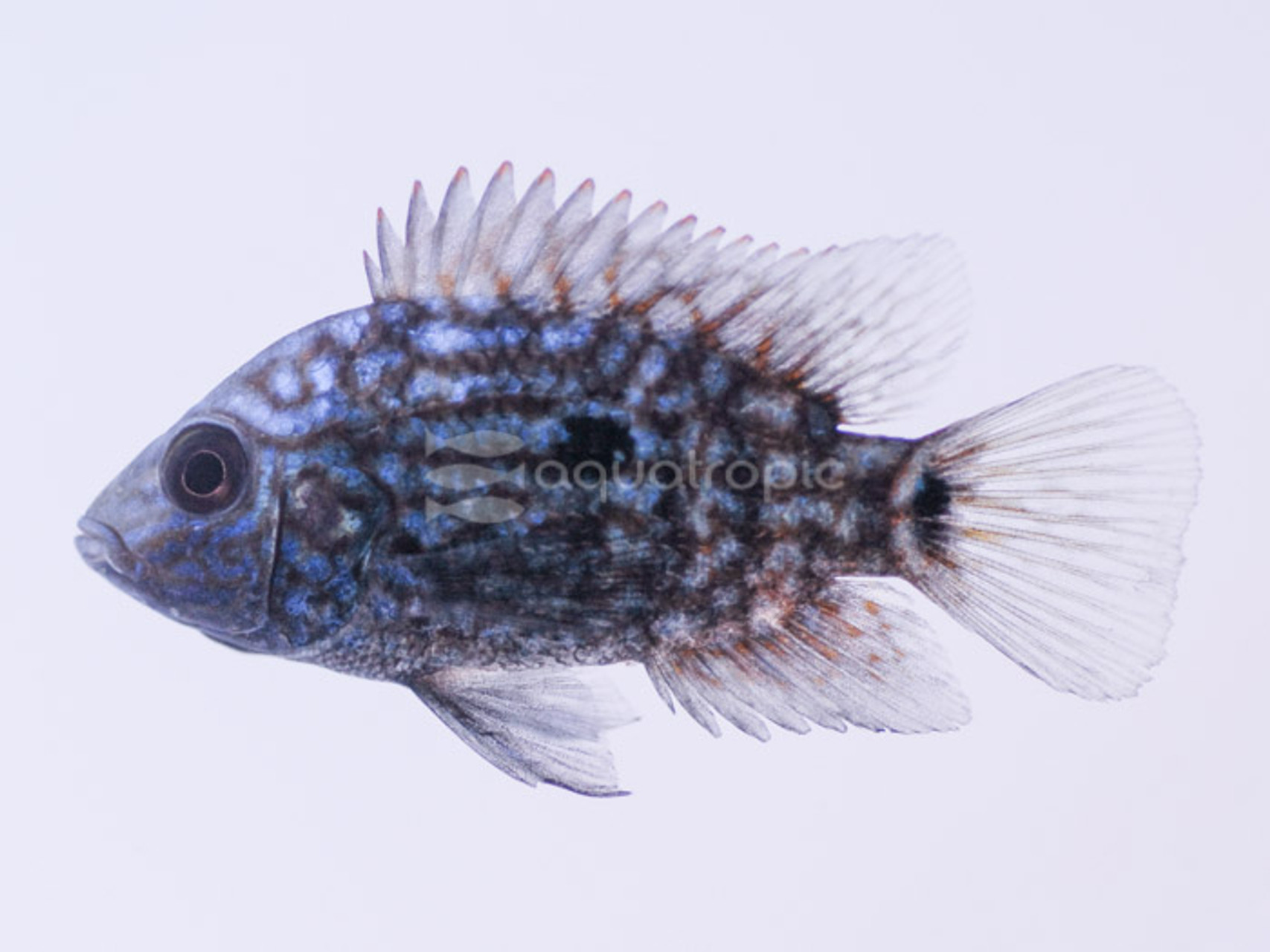Electric Blue Carpintis (Herichtys carpintis)

Herichthys carpintis, the electric blue Carpintis is a new world Cichlidae of a few common names. They include the lowland cichlid, Aztec Carpintis, Pearlscale cichlid and is often mislabeled or confused with other cichlids such as the Texas cichlid (H.Cyanoguttatus). To make it more complicated in captivity, they are at times interbred with like species. In the wild, they hail from Central America, specifically Northern and Central Atlantic slope of Mexcian waterways, lowland areas from Río Soto la Marina to Río Pánuco. They are found in both fast flow areas as well as small lakes and ponds. Water conditions in these areas vary widely, which makes the Electric Blue Carpintis highly adaptable and an excellent choice for captivity.
Carpintis grow relatively large 8" (~20cm), and become quite territorial towards smaller, more peaceful Cichlidae, though they tend to pleasant with each other given appropriate territory and hiding space. Smaller dither fish will be seen as food, even smaller catfish like Corydoras will be seen as potential prey. Tank mates that may be potentially good matches include, Red Devils, flower horns and blood parrots. These would need to be in large aquariums one with at least a 48" length (~122 cm). A few potentially poor tank mates include Jack Dempsey and Oscars in the way of aggression, as well as the H.Cyanoguttatus as mentioned earlier, due to potential interbreeding if that's a concern of yours.
This species is sexually dimorphic with males eventually growing larger and may develop a nuchal hump once reading sexual maturity. Females, on the other hand, may or may not produce a dark block on their dorsal fins.
Due to being found in several ranges of temperatures, pH and water hardness this Cichlidae is extraordinarily resilient and should take to prepared foods, even dry foods, immediately. It should, however, be supplemented at times with frozen foods high in protein such as tubifex and black worms.
To create potential spawning events between pairs, provide rocks with smooth flat surfaces that will be easy for them to prepare. These fish are prolific spawners once paired up. The fry hatch within 4 days typically and become free swimming after about a weeks time to ten days. There may be aggression between the female and male once the eggs are laid, so be sure to keep a tank divider just in case this occurs.
To put it bluntly, these fish produce a lot of waste, erring on the side of caution, an oversized filtration system with supplemented flow will definitely help with this. While mostly resistant to a modicum of unideal water conditions. Should you wish to provide a great environment for Carpintis, even captive bred ones, its a good idea to observe their natural habitat. Limestone dominates most of the geology of the Central American waterways, which translates to the water being hard and alkaline. For example the San Juan River meets these conditions and is home to a multitude of Cichlidae life. (A quick fun fact they may often share that locale with bull sharks that have swum upstream.) Typical temperatures in the tropical range will suffice, and while some breeders will often recommend higher temps, it's only to increase metabolism and create more spawning events.
In considering the above, the Carpintis electric blues husbandry needs are easily met, making it an adequate candidate for beginners and a potential fun bio topic display for the advanced aquarist.